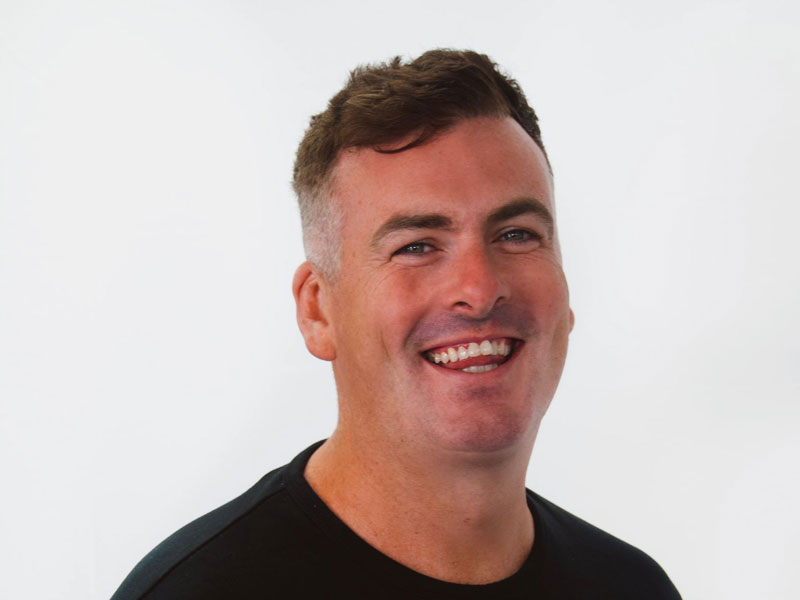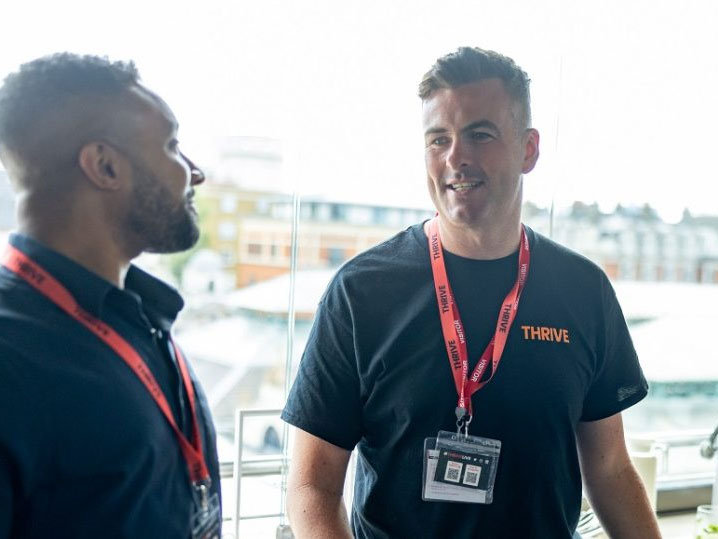
Sean Reddington, CEO and Founder of Thrive Learning, is not your typical entrepreneur or founder of a technology-driven business. He didn’t go to business school or study computer sciences or have family money backing him. Instead, Sean worked hard, took advantage of all the opportunities he could find, and built his own foundations and understanding of what makes a successful business. What’s more, he ensured he had a good grounding in learning technologies and the industry, before seeing an opportunity in the market and seizing it.
Founding Thrive, Sean has changed the game for creating ground-breaking new ventures. Capitalising on his tech knowledge and experience, and recognising that learning is a continual process, Sean saw a huge gap for an Instagram-inspired platform that combined learning, internal comms, skills and collaborative knowledge sharing, and founded Thrive in 2018, armed with an ambition to revolutionise the industry.
Crucial to Sean throughout the process was creating a people-centred business. Sean attributes Thrives fantastic success to taking this approach from the beginning, throwing out the ‘traditional’ business-building rule book, and steering the business through turbulent periods, such as the Covid-19 pandemic.
Keep your friends close
Business books and experts will tell you hiring and working with friends is a bad idea, citing reasons from blurred lines between work and personal, to potential lack of work ethic. However, Sean decided to go against the grain and instead has built a business surrounding himself with trusted friends, colleagues, and people he knows well.
“Starting a new business is always a leap of faith, no matter how good you think the opportunity might be or how confident you are in your vision. You need support and people you can trust around you – trust isn’t built overnight.”
After beginning trading in 2019, the pandemic hit. Sean recalls, “Building a business during a global pandemic was certainly character-building, and there were some dark moments when that first lockdown hit.”
Hiring friends and trusted people from Sean’s existing network is what he sees as one of the secrets to flourishing during such difficult times, alongside transforming Thrive into a business which would succeed in a world of working from home, furlough, and rapid digitalisation.
“Everything I’d worked for across 17 years was invested into Thrive. When Covid hit, we were on a knife edge as businesses furloughed workers and cut investment in non-essential suppliers. And we had to cut pay for our then 35-strong team. Despite taking pay cuts, none of our team left. I’m not naive enough to think that was 100 percent down to our company culture – everyone was stuck between a rock and a hard place back then. But we have focused our efforts on building Thrive, from the very beginning, to be a great place to work with people I know and trust, so I do think that helped hugely.”
He adds: “The lines between work and home were blurred during the pandemic, but that’s not a bad thing – the more we respect people’s responsibilities outside of work, the more valued they feel, and this, inevitably, has a positive impact on wellbeing.”
You don’t always need venture capital investment to grow
For many businesses, an injection of cash or know-how in the early days of building a business from venture capital (VC) can be a huge help and benefit. However, Sean wanted to showcase you can successfully build a business using organic growth. And it has worked. Headline year-on-year results include:
- 100 percent ARR increase.
- 50 percent uplift in customer base; 36 percent increase in employees.
- 99 percent customer renewal rate; 99 percent customer satisfaction.
- 150+ employees – a 33 percent year-on-year increase in headcount – and 350+ customers
In 2022, Thrive turned down 83 acquisition or investment attempts. Sean comments: “We’re having too much fun to sell now. It’s such an exciting time to be at Thrive. I’m surrounded by talented people and working with more and more like-minded global customers every day, with a clear plan for what we want to achieve in the future. Truth is, I’m not ready to give that up.”
The benefit of completely organic growth, without PE-backing or VC funding means there is no pressure to build out an exit plan, and no one external to answer to around where or how money is being spent or invested to help with growth.

Boards don’t always drive the best business decisions
As Sean says, “we’ve never followed the ‘it’s always been done that way’ mentality of business, so why should we start now?”
For Sean, while people have clearly defined roles in the business, he believes hierarchy can create a divide between people in the business. “At Thrive, we’re incredibly fortunate to have such a strong and experienced leadership team. To me, it seems crazy to not tap into all of that knowledge and expertise to drive the business forward.”
The more we respect people’s responsibilities outside of work, the more valued they feel
He continues, “Everyone at Thrive grafts hard and has the same passion and care for the business as myself, Mark, and everyone who has been on this journey since the beginning. Most of our success has come from ideas that have been sparked in conversation with everyone (or maybe over a Guinness…), so I want to ensure as a business we can continue to tap into that knowledge and idea stream, and encourage even more collaboration across the team where we can. Not just have a board of directors who make all the decisions.”
A final benefit of not having a board to report to, is that Sean and the team have the freedom and privilege to make business decisions without the rigmarole of seeking permission. This has allowed Thrive to be nimble and agile, and bring in experimental initiatives such as a £10,000 cash prize for the best sales lead of the year, as one example.
Don’t be afraid to bring development decisions forward
At Thrive, the team has a business plan and ambitions of where they want to be in the future. However, thanks to the reactive nature of the business, the team has had the ability to fast-track business decisions if the opportunity is there, and adapt its platform based on conversations with customers in order to solve real-world challenges.
For example, in 2022 Thrive heard its customers’ pain-points and took a fresh approach to skills development. Thrive’s tech is built from listening to end users, emphasising the point that learning shouldn’t just be a tick box exercise.
Sean comments, “Our industry is ladened with never-ending acronyms and astronomical additional or hidden costs. Our customers wanted a space which combined all their learning and comms needs together in a way that addressed the whole picture and ideally saved money by consolidating everything into one platform. We’ve been fortunate to be able to team up with customers like Vodafone, Sky, and Matalan to develop our platform to meet the needs of our customers.
“Taking the leap and moving away from the LXP label, and calling Thrive an ‘all-in-one learning and skills platform’ was a big decision for a company still not yet five years old. But it paid off. Today we’re proud to be used by hundreds of global companies not just for training, but to communicate policies and business-critical messages as well as identify, progress and manage skills across their organisation – So, when we say ‘all-in-one’ we really mean it.”

